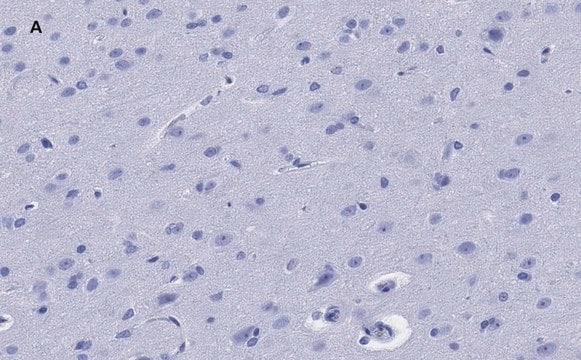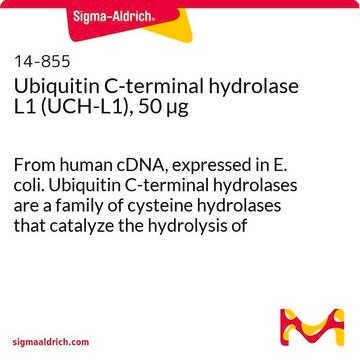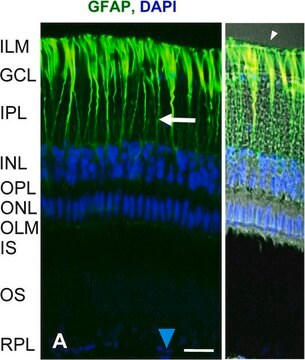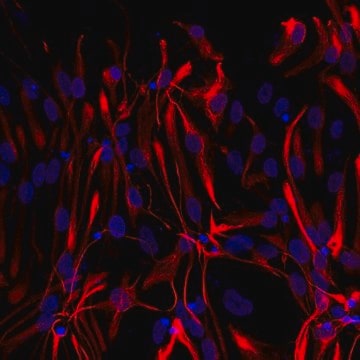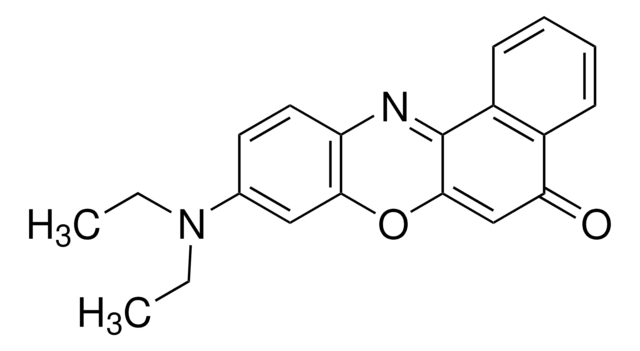AG230
Glial Fibrillary Acidic Protein, porcine
Sinonimo/i:
GFAP
About This Item
Prodotti consigliati
Origine biologica
Porcine
Livello qualitativo
Saggio
>99% (pure GFAP)
Stato
liquid
PM
calculated mol wt 49.44 kDa (428 a.a. spliced isoform; NP_001231326)
calculated mol wt 53.63 kDa (468 a.a. spliced isoform; XP_005668766)
Produttore/marchio commerciale
Chemicon®
Concentrazione
1 mg/mL
tecniche
ELISA: suitable
radioimmunoassay: suitable
western blot: suitable
N° accesso NCBI
N° accesso UniProt
Condizioni di spedizione
dry ice
Informazioni sul gene
pig ... GFAP(396562)
Descrizione generale
Stato fisico
Stoccaggio e stabilità
During shipment, small volumes of product will occasionally become entrapped in the seal of the product vial. For products with volumes of 200 μL or less, we recommend gently tapping the vial on a hard surface or briefly centrifuging the vial in a tabletop centrifuge to dislodge any liquid in the container′s cap.
Risultati analitici
Note legali
Codice della classe di stoccaggio
12 - Non Combustible Liquids
Classe di pericolosità dell'acqua (WGK)
WGK 2
Punto d’infiammabilità (°F)
Not applicable
Punto d’infiammabilità (°C)
Not applicable
Certificati d'analisi (COA)
Cerca il Certificati d'analisi (COA) digitando il numero di lotto/batch corrispondente. I numeri di lotto o di batch sono stampati sull'etichetta dei prodotti dopo la parola ‘Lotto’ o ‘Batch’.
Possiedi già questo prodotto?
I documenti relativi ai prodotti acquistati recentemente sono disponibili nell’Archivio dei documenti.
Il team dei nostri ricercatori vanta grande esperienza in tutte le aree della ricerca quali Life Science, scienza dei materiali, sintesi chimica, cromatografia, discipline analitiche, ecc..
Contatta l'Assistenza Tecnica.
